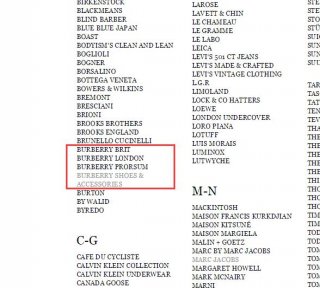marcBarna
Well-Known Member
- Joined
- Aug 4, 2010
- Messages
- 29,043
- Reaction score
- 291
By Vanessa Friedman
nytimes.com
On Tuesday, in a briefing just before Burberry unveiled its latest holiday ad campaign, Christopher Bailey, chief executive and chief creative officer of the brand, also announced what he suggested was a gift to consumers: the news that the three Burberry women’s and men’s wear lines would begin a consolidation process, so that by the end of 2016, there will be a single brand on offer in stores.
No more Burberry London! Or Burberry Brit! Or Burberry Prorsum (the name of the runway line, which most consumers could neither pronounce nor spell)! No more separate design teams!
Soon it will all be Burberry, period.
(Of course, it’s very likely you never realized there was a difference, but that’s the point.)
Mr. Bailey also announced the construction of a factory in Leeds, England. Due for completion in 2019 and at a cost of 50 million pounds ($77 million), it is expected to employ more than 1,000 people, clearly a boon to the local economy and to Burberry’s identification as the dominant British luxury brand. But, it’s the one-line thing that I think has the most far-reaching implications.
Along with the decision by Marc Jacobs’s management in March to fold the Marc by Marc Jacobs line into the main brand, the announcement three months later that LVMH Moët Hennessy Louis Vuitton would, after Ms. Karan’s departure, suspend the main Donna Karan collection, not to mention the 2011 decision by Dolce & Gabbana to end the D&G line, that makes four — count ’em — major labels that have abandoned the old model of separate high-end/accessible lines.
It’s kind of a big deal, not just because of the logistical transformation involved, but also because it is a repudiation of a strategy that has shaped fashion since the “bridge” line became a “second” line around the turn of the millennium.
“We will still have the wide range of products that we have today — they will all just be known as Burberry, as part of a unified, consistent luxury brand,” Mr. Bailey said in a speech. “We believe that this will make us simpler and more intuitive for our customers. And we are confident that this will make us both more productive and more efficient as a business.”
It is an eerily familiar rationale after the one offered by Sebastian Suhl, chief executive of Marc Jacobs, about the Marc by Marc Jacobs decision. To paraphrase: 1) People shop high/low, elitist/accessible, these days, especially online, so why should we create and organize our offerings differently? 2) They were confused by all the different names anyway.
Julian Payne, a spokesman for Burberry said that despite the consolidation of Brit, London and Prorsum, no layoffs are planned, and the overall size of the product offerings and the price mix would not change; just the names (and the names of stores — there are a few Burberry Brit-only stores, which will now become Burberry stores).
Unlike Marc Jacobs, however, who mixed his product lines in his runway extravaganza in September, the new, big tent Burberry will reserve its high-end “conceptual” pieces for the catwalk, and they will be distinguished by a special garment tags (the broader Burberry offering will display a trench-beige tag with black script; the runway collection will have a black tag with golden-beige script). However, the full range will appear as one in stores, which is how, Mr. Bailey said, his customers shop.
nytimes.com



